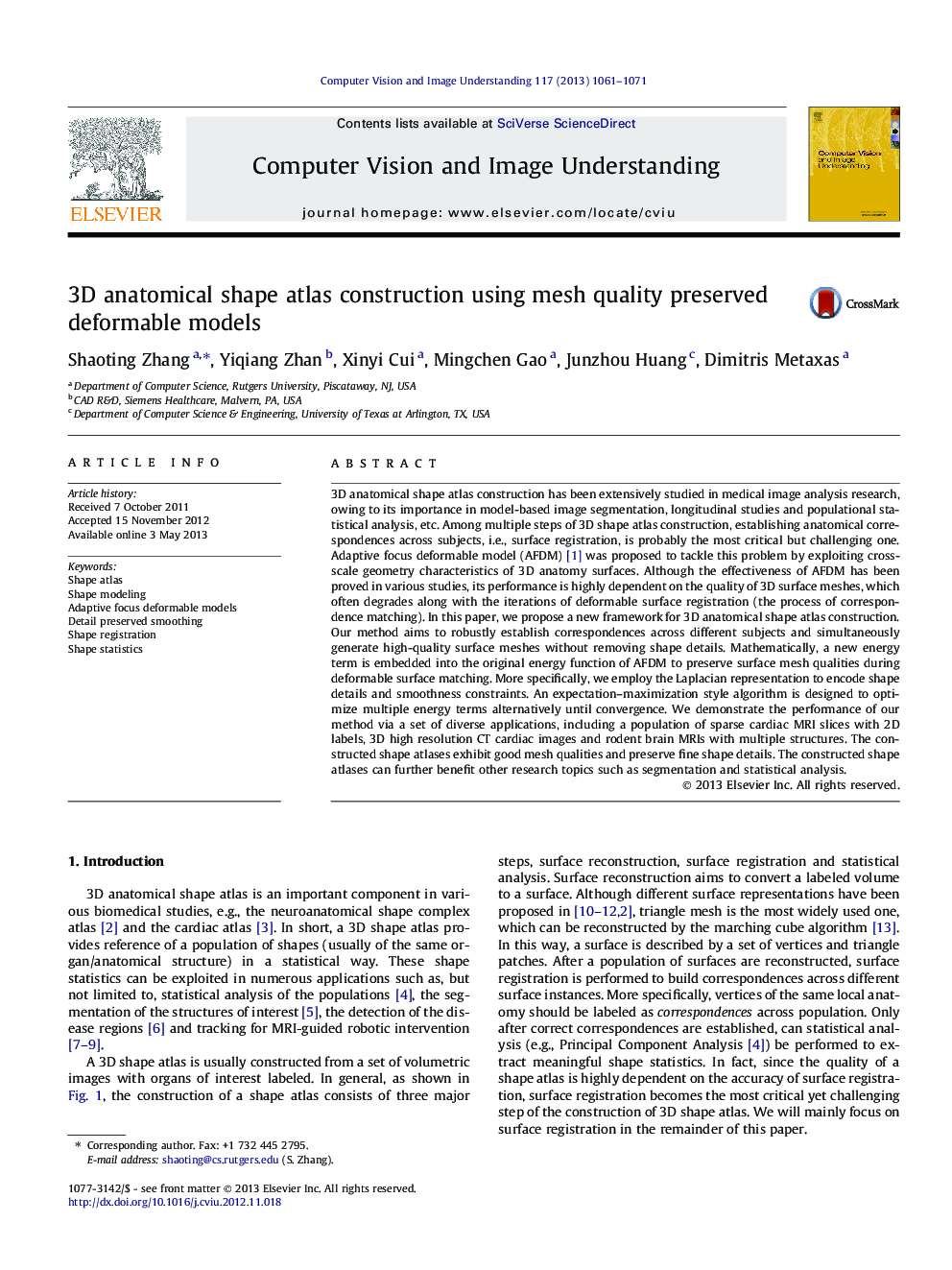| کد مقاله | کد نشریه | سال انتشار | مقاله انگلیسی | نسخه تمام متن |
|---|---|---|---|---|
| 525788 | 869025 | 2013 | 11 صفحه PDF | دانلود رایگان |

• Propose a robust framework to model shape and create shape atlas.
• It improves AFDM by incorporating an energy term to preserve shape quality.
• The results are generally smooth without significantly sacrificing shape details.
• Using this approach, we solve several diverse and challenging tasks.
3D anatomical shape atlas construction has been extensively studied in medical image analysis research, owing to its importance in model-based image segmentation, longitudinal studies and populational statistical analysis, etc. Among multiple steps of 3D shape atlas construction, establishing anatomical correspondences across subjects, i.e., surface registration, is probably the most critical but challenging one. Adaptive focus deformable model (AFDM) [1] was proposed to tackle this problem by exploiting cross-scale geometry characteristics of 3D anatomy surfaces. Although the effectiveness of AFDM has been proved in various studies, its performance is highly dependent on the quality of 3D surface meshes, which often degrades along with the iterations of deformable surface registration (the process of correspondence matching). In this paper, we propose a new framework for 3D anatomical shape atlas construction. Our method aims to robustly establish correspondences across different subjects and simultaneously generate high-quality surface meshes without removing shape details. Mathematically, a new energy term is embedded into the original energy function of AFDM to preserve surface mesh qualities during deformable surface matching. More specifically, we employ the Laplacian representation to encode shape details and smoothness constraints. An expectation–maximization style algorithm is designed to optimize multiple energy terms alternatively until convergence. We demonstrate the performance of our method via a set of diverse applications, including a population of sparse cardiac MRI slices with 2D labels, 3D high resolution CT cardiac images and rodent brain MRIs with multiple structures. The constructed shape atlases exhibit good mesh qualities and preserve fine shape details. The constructed shape atlases can further benefit other research topics such as segmentation and statistical analysis.
Journal: Computer Vision and Image Understanding - Volume 117, Issue 9, September 2013, Pages 1061–1071